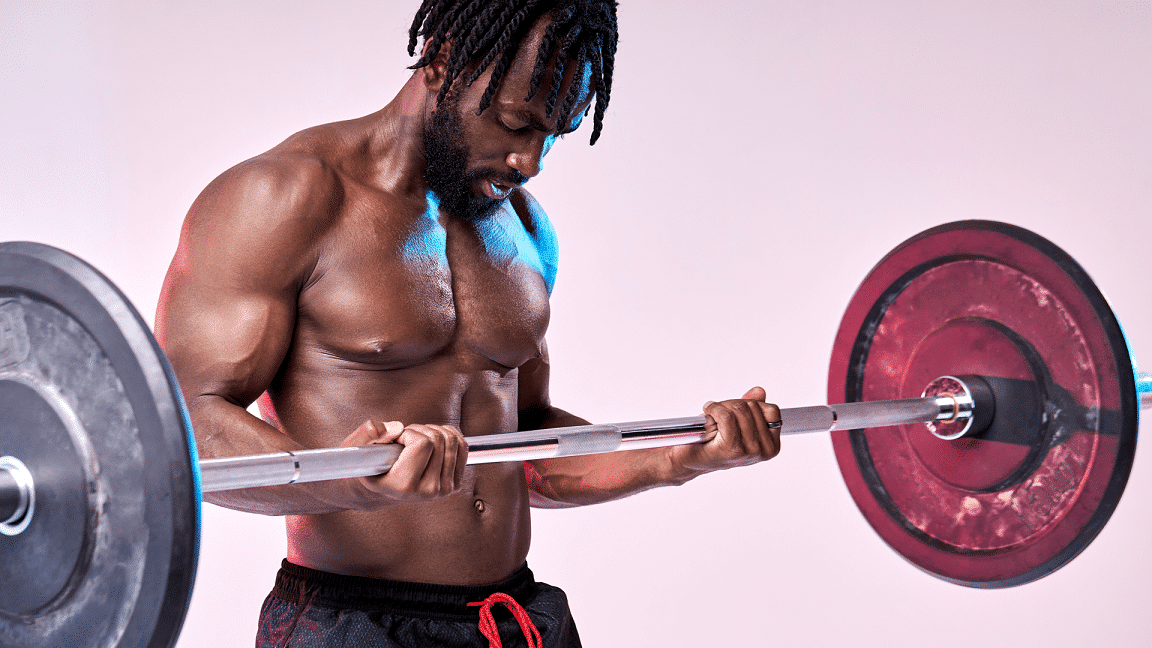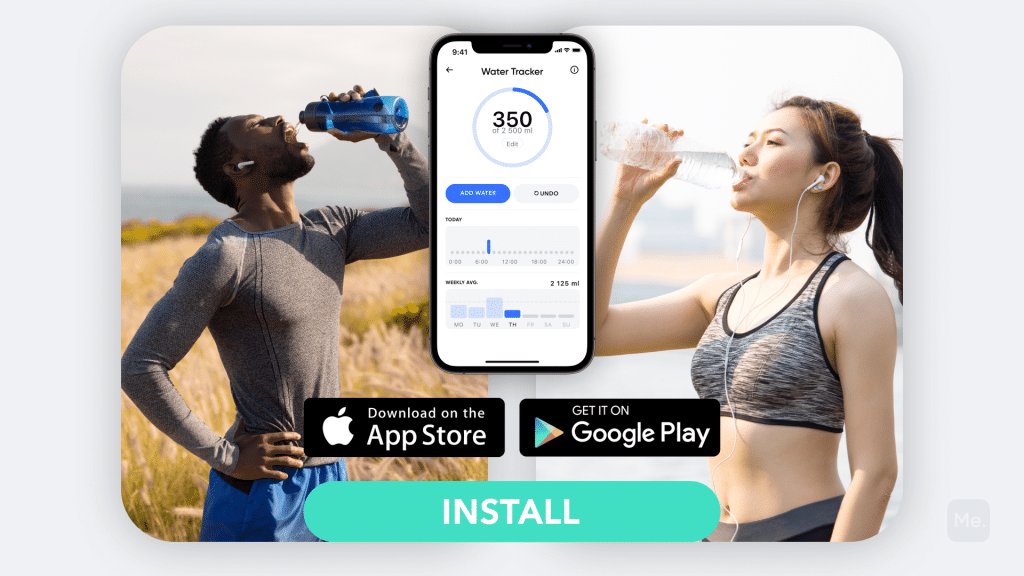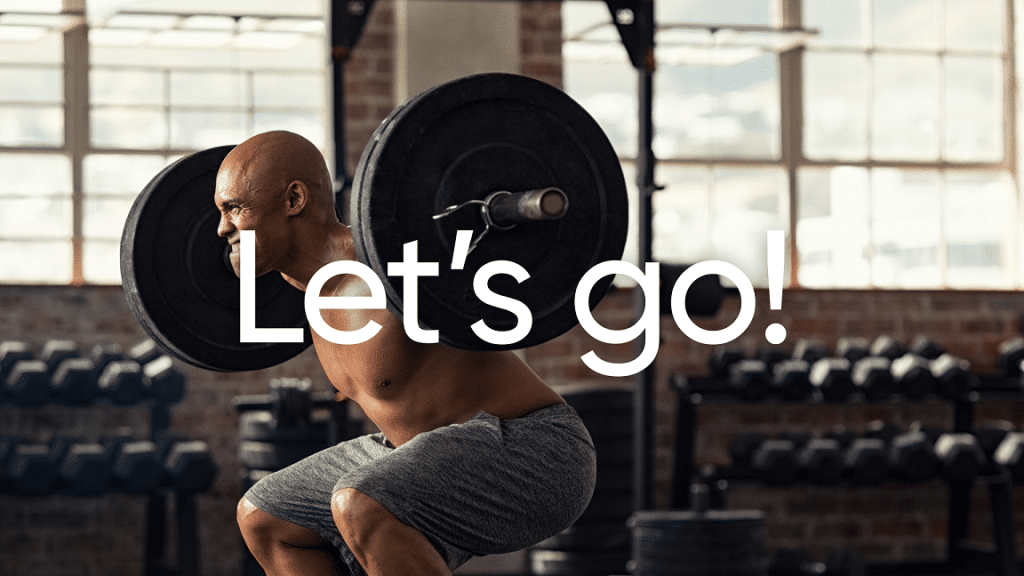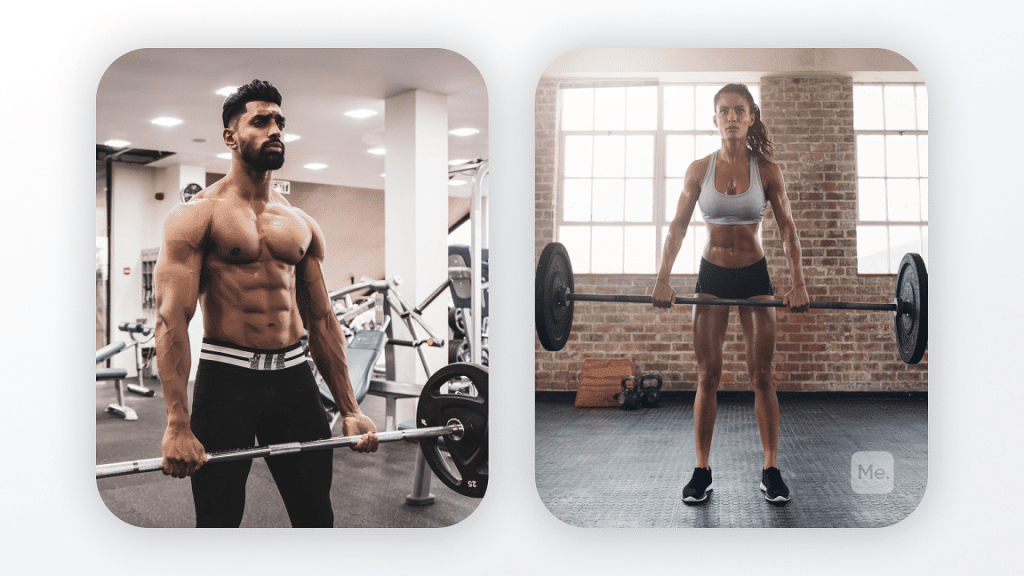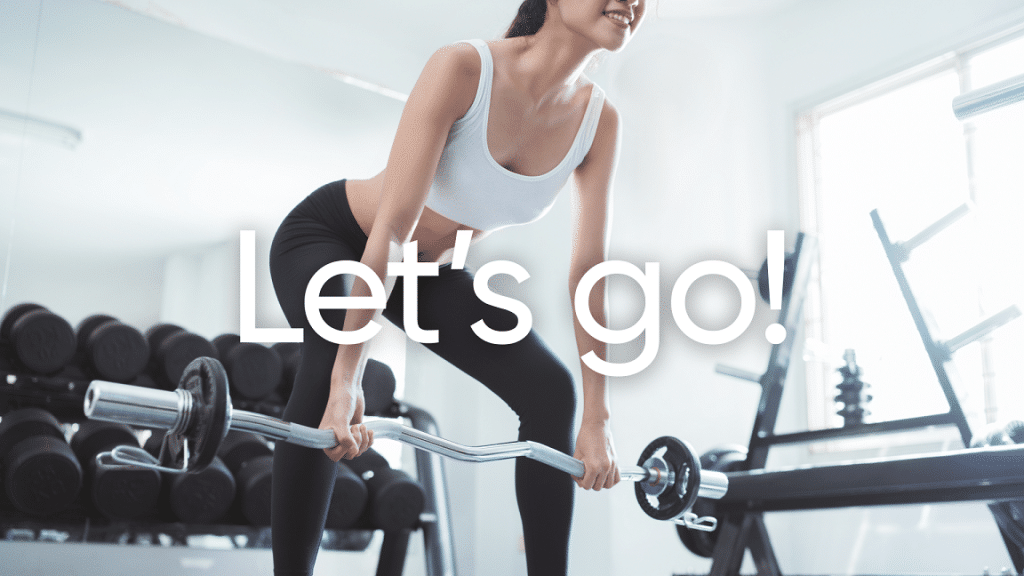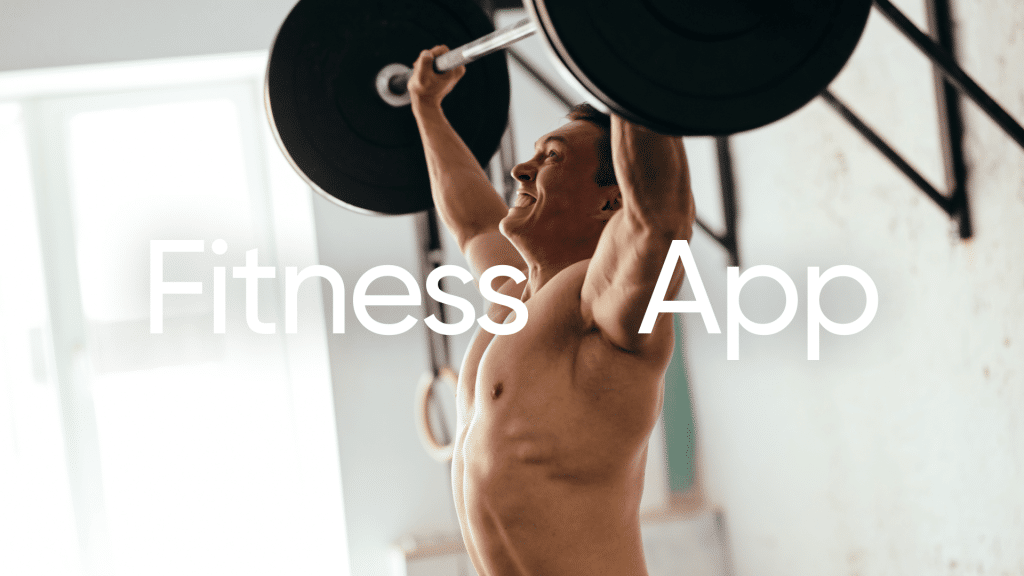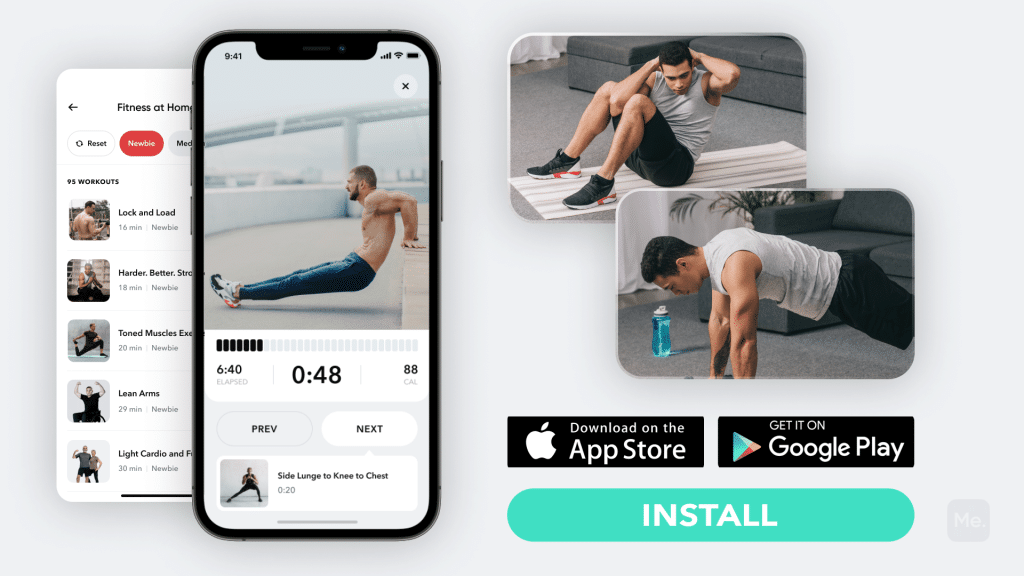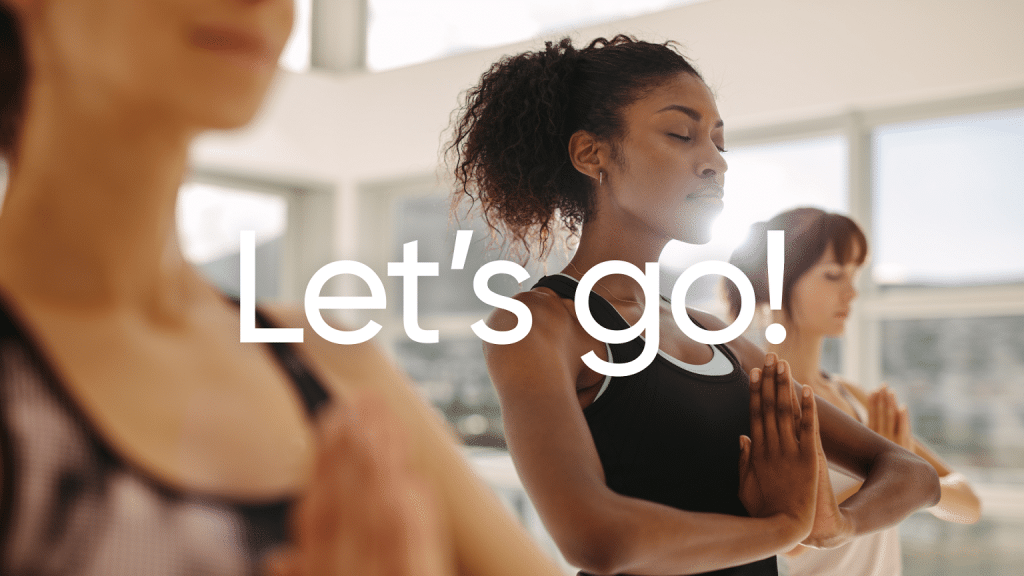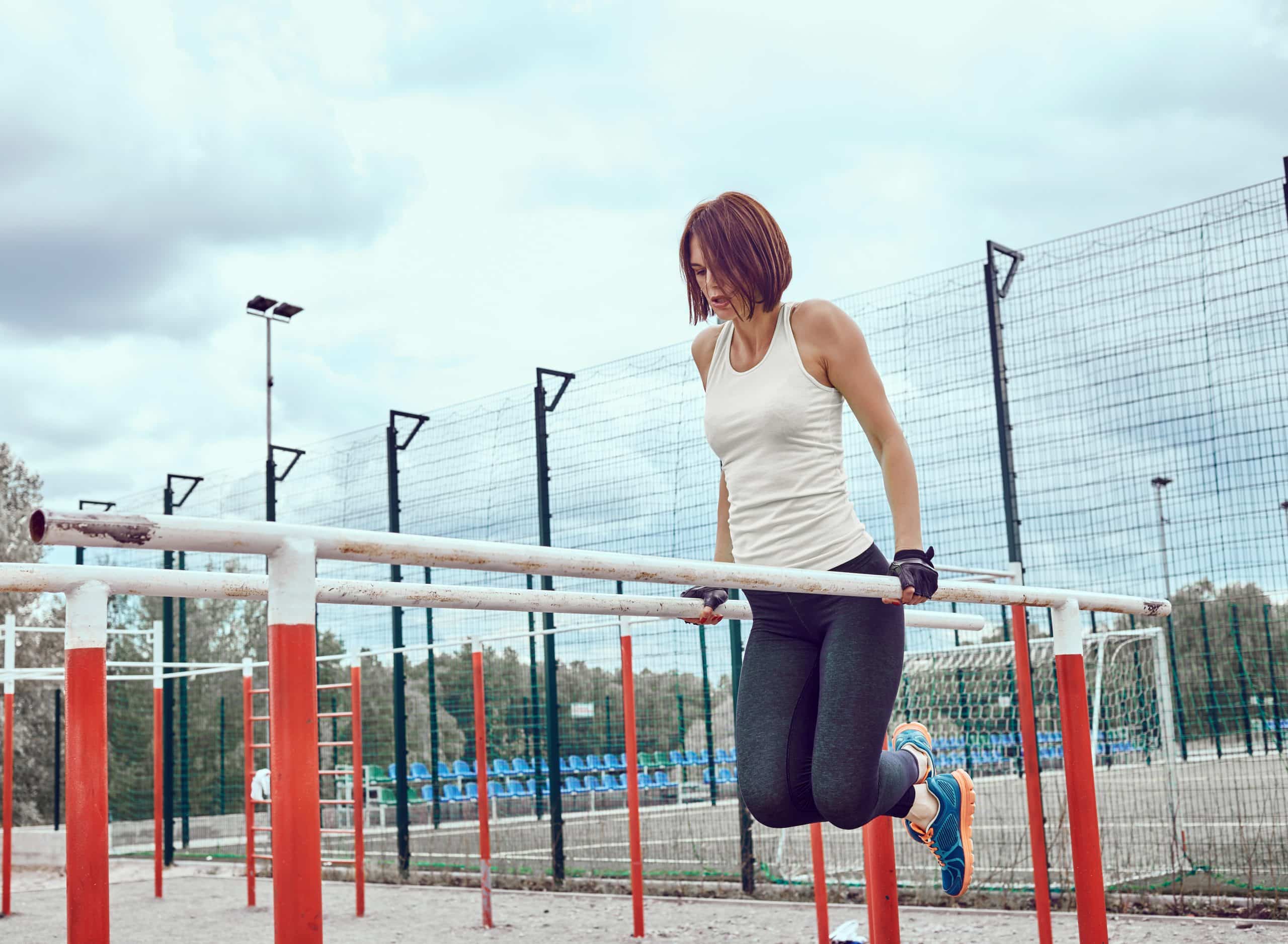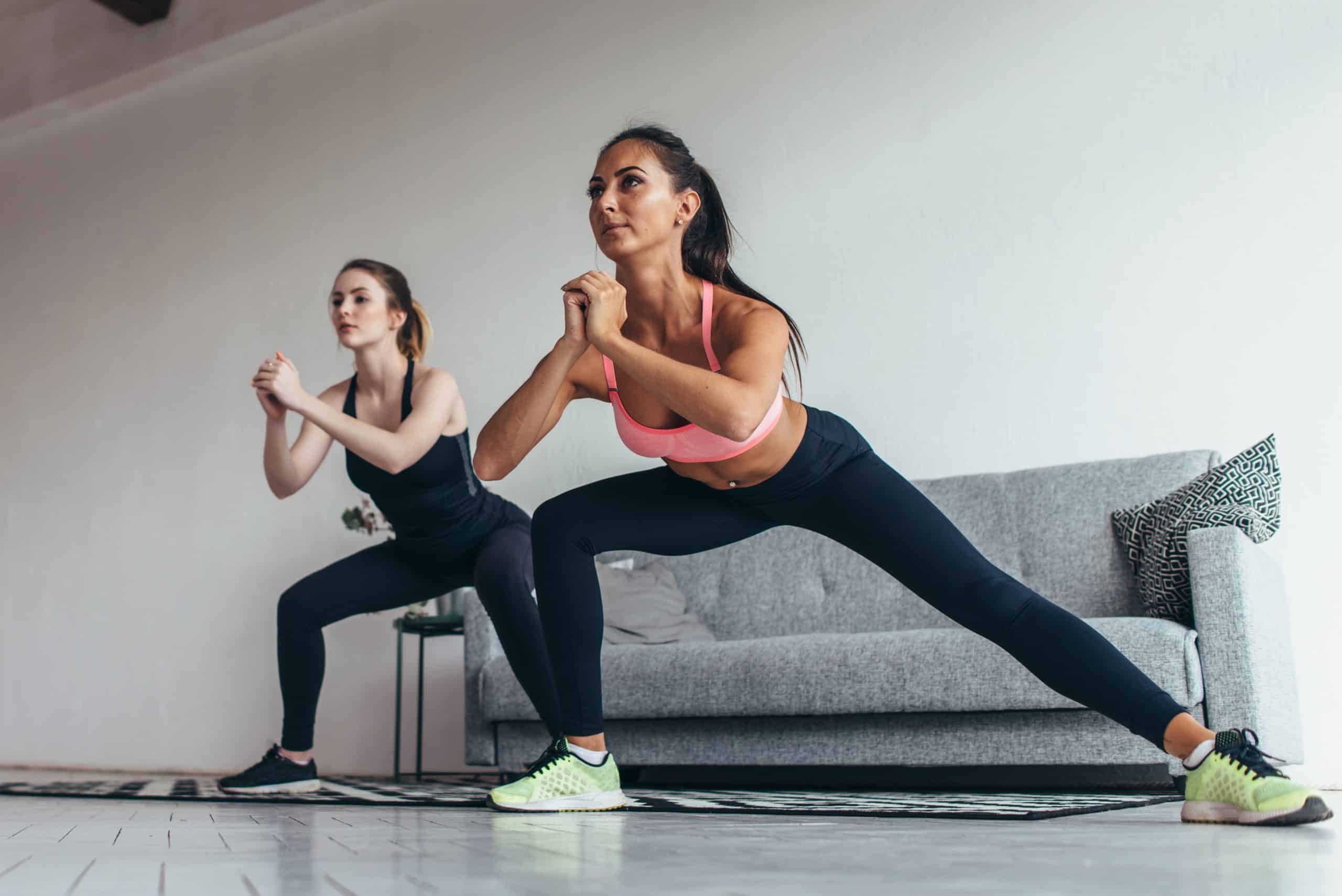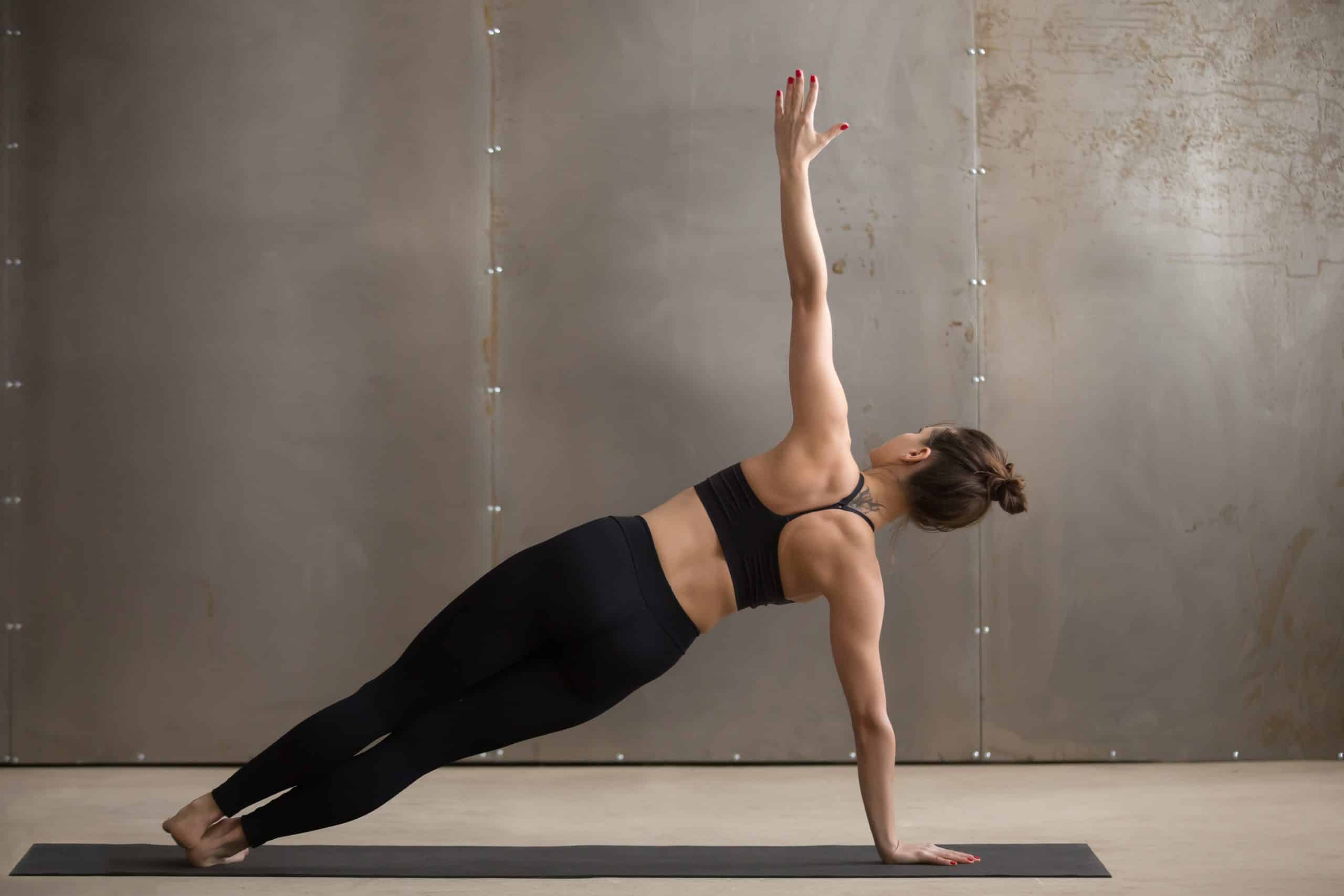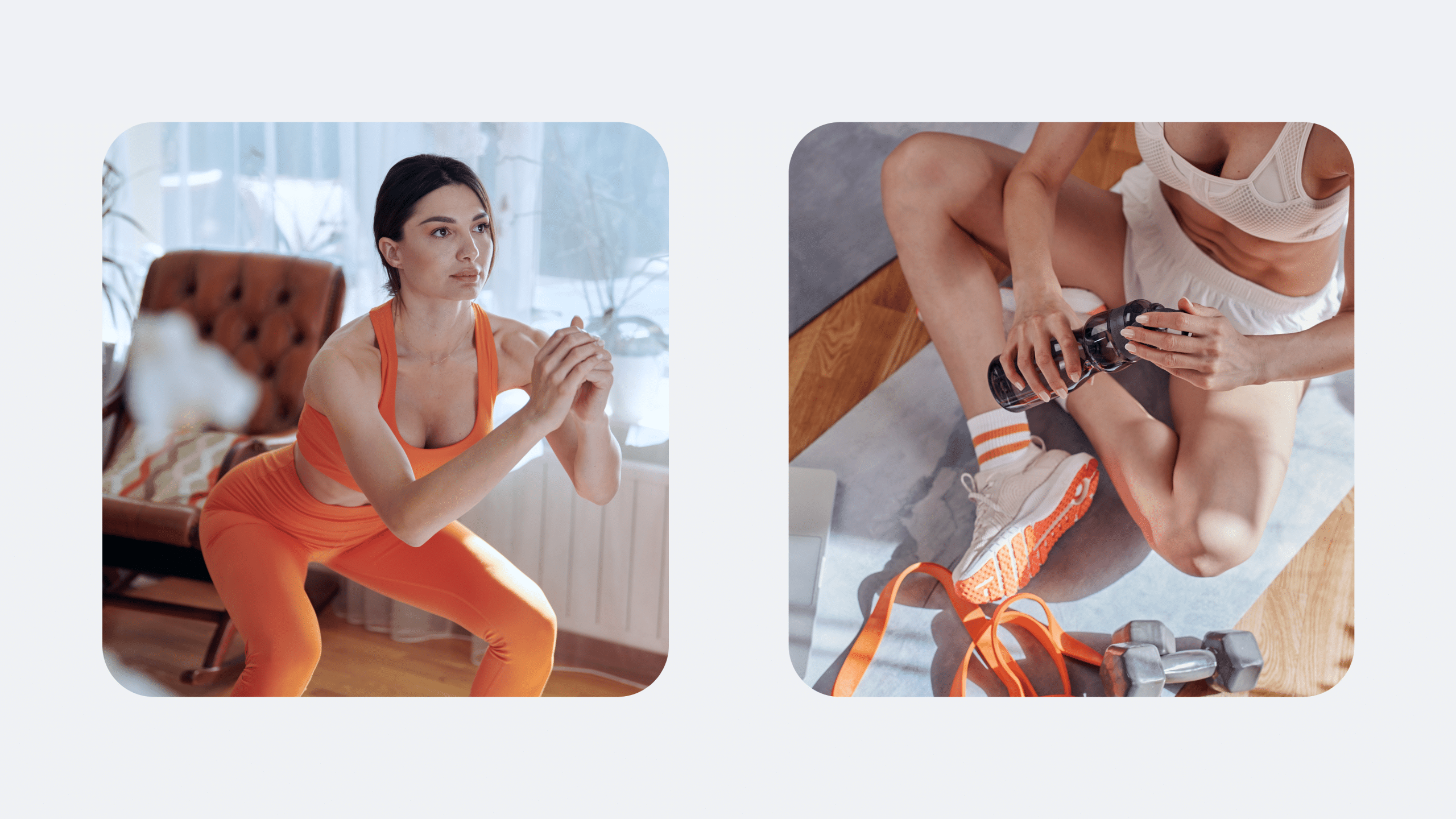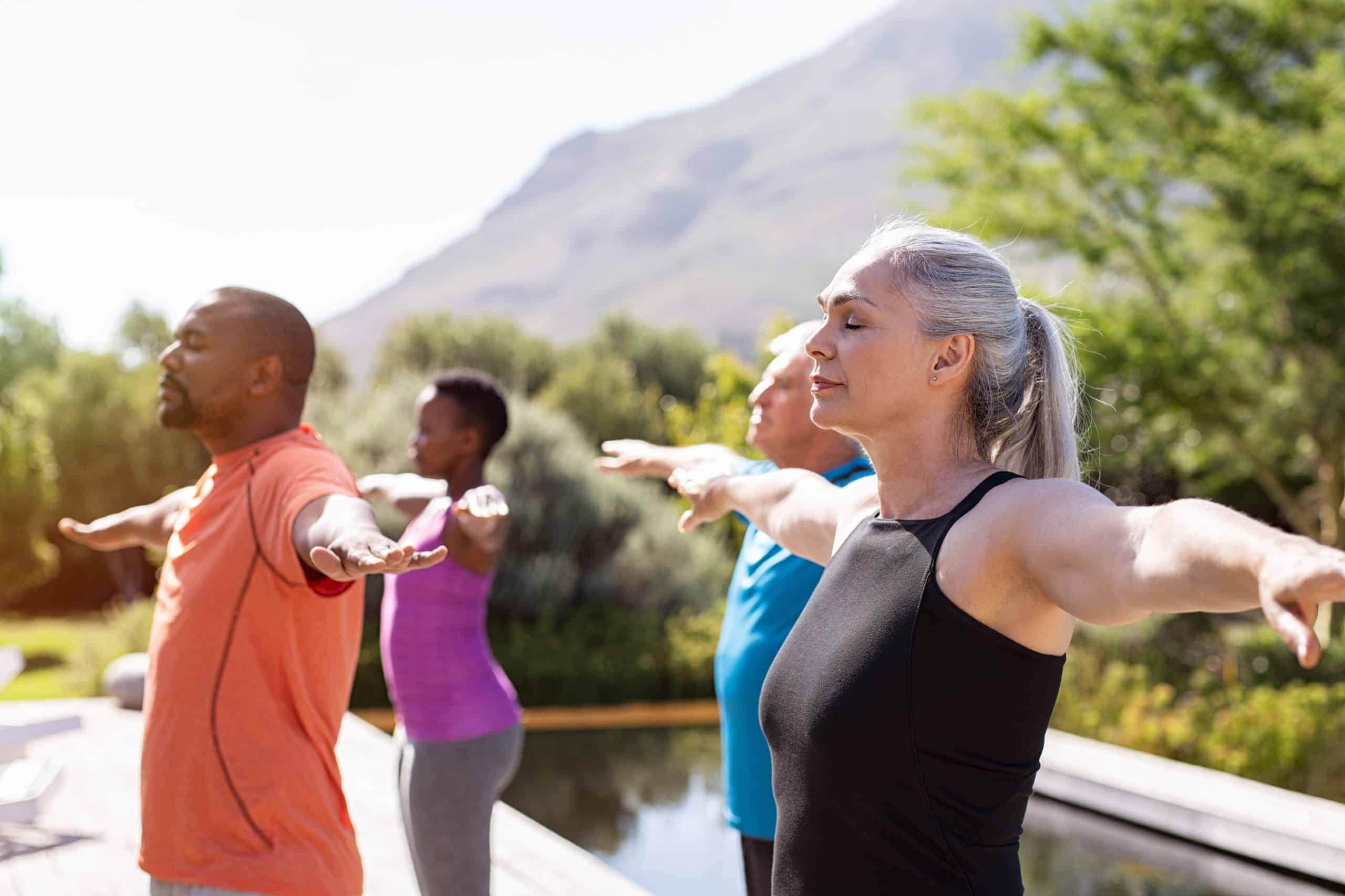Are you new to the gym? Even so, you have probably heard of deadlifts and that they can be a daunting experience. The truth is that the deadlift is one of the best forms of powerlifting exercises.
Some would even say that deadlift is overrated and not worth it. However, when correctly done, deadlifts work most major muscles in the body. But, what are variations of a deadlift? Here are the different deadlift variations to properly wrap your head around this form of exercise to get you lifting better than ever.
What Is A Deadlift?
The deadlift is a form of weight training where you raise a weight off the ground to the level of the hips using your hips and leg muscles then place it back on the ground. Typically barbells, kettlebells, dumbbells or plates, and a pair of bar collars are used.
The deadlift is a compound workout that involves several major muscle groups. Many people are skeptical about this form of powerlifting, but with the correct progressions, the deadlift is a safe and effective full-body exercise that can take your workout a notch higher.
Read More: Deadlift vs. Squat: Pinning Down The Real Winner Of This Long-Standing Debate
What Muscles Do Deadlifts Work?
Deadlifts involve the use of muscles of the back, hips, arms, and even shoulders. They are ideal for building lean muscle mass, improving strength and power. Additionally, because of the involvement of several parts of the body, they are excellent for increasing your heart rate and can be used in cardiovascular-focused weight circuits.
The main muscles trained during deadlift include the leg’s muscles (quads and hamstrings), gluteal muscles, the erector spinae, and the core musculature. All these muscles play a different role in helping you move your body and bring a weight up and down.
The quadriceps and hamstrings are the muscles of the legs involved during a deadlift. The hamstrings extend the hips and pull you from the lowest level of the lift. On the other hand, the quadriceps contract to help you straighten your knees.
The erector spinae is the primary back muscle that is activated. This muscle group includes the spinalis, longissimus, and iliocostalis. This muscle is large, rope-like, and runs along the right and left sides of the spine from the base of the skull to the sacrum. It helps extend your torso and bring you up during the lift.
All three gluteal muscles (gluteus minimus, gluteus medius, and gluteus maximus) are involved during a deadlift, but the gluteus maximus is the most activated. The gluteus maximus, and the hamstrings, help extend your hips and bring you out of the flexed position. The gluteus minimus and medius act as stabilizers of the hips.
The core musculature is also involved during a deadlift and helps protect the spine. The abdominal muscles also contract to help provide a natural pressure increase around the lower back. This pressure increase helps keep the vertebral column stable. Keep in mind that your back can be at a higher risk of injury.
How To Do Deadlifts Correctly?
To get the most out of deadlifts and avoid injury, you should lift using proper technique and only the weight you can handle. When lifting weights, your body will respond because of the repeated stress of the workout. It is expected that you will feel some fatigue after a morning at the gym, but the effects should wear off.
You should feel it working your glutes, hamstrings, and erector spinae muscles to know you are doing deadlifts correctly. If you feel pain and have difficulty going about your daily activities like bending or turning in bed, then there might be something wrong with your technique.
How to fit all deadlift variations in one workout might be a concern. The deadlift variations are many, and it is impossible to do all of them in one workout session.
A series of deadlifts is divided into 4 stages – set up, drive, lockout, and lowering the weight.
-
Setup
- Stand just behind the bar with it touching or nearly touching your legs.
- Start by hinging at the knees and hips, setting your weight in the heels. Your feet should remain flat on the ground.
- Maintain the spinal column long and straight as the hips hinge backward. Be careful not to allow the knees to track forwards over the toes.
- Grip the bar with your hands outside of the legs.
- Move the shoulders away from the ears to load the latissimus dorsi and create force throughout the erector spinae (2).
When it comes to weight loss, progress is made by inches, not miles, so it’s much harder to track and a lot easier to give up. BetterMe app is your personal trainer, nutritionist, and support system all in one. Start using our app to stay on track and hold yourself accountable!
-
Drive
This section produces the highest amount of force and is considered the most challenging part of the deadlift.
- Take a deep breath and hold it in. This creates an outward pressure on the core and helps stabilize the lumbopelvic hip complex and the core musculature.
- Keep the muscles of the back contracted tightly to maintain proper and safe posture throughout the movement. Without an adequate core contraction
- Move up and forward with the hips and legs to stand erect and lift the bar from the ground.
-
Lockout
The lock-out is the most crucial part of the movement. It requires you to be completely erect and with a neutral spine.
- Drive your hips into the bar.
- Contract the gluteal muscles and the rectus abdominis to complete the movement. The pelvis should be in a neutral position (contracting the gluteal and abdominal muscles is essential for lower back safety.)
-
Lowering The Weight
This is the final section that involves moving the weight back on the ground.
- Hinge at the knees and hips to bring the bars down. The muscles of the core and back must remain straight.
- While keeping the bar close to you, lower the chest to the knees (2).
10 Deadlift Exercise Variations With Step-By-Step Instructions
Just like other types of exercises, there are several deadlift variations. This makes it easier for you to choose a variation that best works for you having your fitness goals in mind. So, what are the deadlift variations?
Here are 10 of the most common:
Single-Legged Deadlift
The single-legged deadlift challenges you more than the conventional deadlift as you are likely to be lifting more weight. With this variation, you lift with one leg at a time as the other leg remains on the floor. You can choose to hold the dumbbells in both arms, one arm, or in the hand opposite to the side that’s doing the work.
Holding the dumbbells in both arms is the most common form of the one leg deadlift variations. Single-legged deadlifts activate the major muscles in the body, such as the gluteal muscles, the hamstrings, and the core. The fact that you put weight on one leg at a time adds to the balance challenge, so there’s some extra stress on the glutes.
How to do a single-legged deadlift:
- Stand with your feet together while holding a dumbbell in each of your hands. Your hands should be in front of your leg.
- Shift your weight to the right leg. While maintaining a slight bend in your right knee, raise the left leg behind your body, hinging at the hips to bring your trunk parallel to the floor, the lower the dumbbell.
- Ensure your back remains flat. At the bottom of the movement, your left leg and trunk should be almost parallel to the floor and the dumbbell a few inches from the ground.
- Keeping your core as tight as possible, drive through your right heel to stand up straight and pull the dumbbell back to the starting position. Move your left leg back to meet your left foot while keeping most of the weight in your right leg.
- Pause at this point, then squeeze your butt. This is one rep.
Romanian Deadlift
The Romanian deadlift is one of the most basic deadlift variations. It is done with stiff legs and minimal knee bend. This variation focuses on the gluteal muscles and hamstrings. They thus help build muscle along the posterior chain and improve the flexibility and mobility of the hips.
How to do a Romanian deadlift:
- Stand with your feet hip-width apart and slightly flex your knees.
- Grab the weight with an overhand grip and bring it to your thigh level.
- Draw your shoulders back and keep your back straight.
- Push your hips and butt backward as you slowly lower the barbell towards your feet.
- Press your hips forward to come into a standing position with the weight in front of your femora.
- Repeat this movement by lowering the weight between your knees and toes, keeping your spine neutral while slightly bending your knees and involving your core (1).
If you wish to free yourself from all the extra pounds that have been weighting you down for way too long, start using the BetterMe app and overhaul your entire life!
Kettlebell Deadlift
The kettlebell deadlift is a good entry point for many novice weightlifters. It is also convenient in case you do not have a lot of equipment. Kettlebell deadlifts help increase your grip strength, especially when you use heavier weights. This variation helps you build glute and hamstrings muscles and work out your latissimus and mid-back muscles.
How to do a kettlebell deadlift:
- Stand with your knees slightly bent and feet hip-width apart. Hold a kettlebell with both hands in front of your thighs.
- Hinge at your hips, then slightly bend your knees. Push your glut way back and keep your back flat. Ensure that your torso is almost parallel to the floor. Touch the bottom of the kettlebell to the floor.
- While keeping your core tight, push through your heels to stand up straight. Keep the kettlebell close as you pull.
- Pause for a while at the top and squeeze your butt. Do a few reps.
Straight-Legged Deadlift
The straight-legged deadlift is one of the most avoided forms of this workout. Many are skeptical about it because of fear of back injuries. If you have a pre-existing back condition, it might be best to avoid this variation. The straight-legged deadlift strengthens the muscles of the legs and the back.
How to do a straight-legged deadlift:
- Stand on a box with your feet apart, grab the bar as you tighten your legs to keep your knees straight.
- While hinging your hips, bend as forward as you can, keeping your knees and the barbell close to your legs.
- Stand up by straightening your hips and returning your back to a straight position.
Sumo Deadlift
This is a variation of the conventional deadlift. In sumo, the bar is gripped with the hands inside the toes. This variation usually requires a wider stance and does not work up your back as much.
The workload shifts from the back to the quads, hamstrings, hips, and glutes. This makes it safer for your back as the torso is more upright during the lift. At first, it may be challenging to get the hang of it and might need some getting used to.
How to do the sumo deadlift:
- Stand with your feet wider apart than your shoulder width, your knees slightly bent, and toes slightly pointed outwards.
- Hold a bar with both hands inside the middle of your legs.
- Bend at the hips and knees to lower your body. Push your butt behind and keep your back flat. Your trunk should also be parallel to the ground.
- Keeping your core tight, drive through your heels and extend your knees to stand up straight. Lift the bar to the mid-thigh level.
- Pause at the top and squeeze your butt behind. Pull your shoulders back and lower the bar to the floor.
Deficit Deadlift
With deficit deadlift, you lift a barbell while standing on a raised block. This increases the distance the weight travels as you lower it to the ground resulting in a longer range of motion, making it a little challenging. This variation is beneficial when it comes to building strength.
How to do a deficit deadlift:
- Set up by standing with your feet over a block about one or two inches high. Stand with your feet one inch away from the barbell.
- Lean over while keeping your legs straight and hold the bar with your arms outside your legs.
- Push your shins forward until they touch the bar.
- Squeeze your chest up to engage the lower back muscles.
- Pull the bar up to the level of your thighs.
Partial Rep Deadlift
Partial rep deadlifts are great for the lower back and the upper body. They work the latissimus dorsi, erector spinae, and trapezius muscles. If you are new to deadlifting, then partial reps are a great place to start before you move to full deadlifts.
How to do a partial rep deadlift:
- Load a barbell with 20% less weight than you usually deadlift.
- Stand with your feet hip-width apart.
- Hinge your hips backward, grab the barbell and then squeeze your core and lats.
- Lift the bar 4 inches off the floor, hold for 3 seconds, then stand up straight.
- Pause at this point, then return to the start. This is one rep. Do 3 sets of 4 to 6 reps.
Read More: Benefits Of Deadlifts: A Triple Threat For Your Back, Booty, And Legs
Trap Bar Deadlift
The trap bar deadlift is easier to perform than the conventional deadlift. With this variation, you stand at the center of the weight instead of lifting it from the side. It is one of the best deadlift variations for legs. The quadriceps muscles are the most worked muscle group.
The only downside is that you might not find a trap bar in all gyms. A trap bar is typically a hexagonal weight bar with a set of plates.
How to do the trap bar deadlift:
- Stand inside the hex with a hip-width stance with your toes pointed outwards.
- Reach down to hold the handles of the hex bar, then push your hips back.
- Lift your shoulder and chest, then raise your gaze such that your eyes are looking in front.
- While keeping your back flat, stand up straight by extending your knees and hips to lift the hex bar to the mid-thigh level.
- Pause at the top and squeeze your glute, then lower the bar back to the ground.
Resistance Band Deadlift
This is a great variation in the case you do not have a lot of equipment or weights. As the name suggests, this variation uses resistance bands instead of dumbbells or barbells. It is an excellent deadlift variations for glutes.
Resistance band deadlift works all 3 gluteal muscles, your hamstrings, quadriceps, erector spinae, lower back, and forearm muscles. If you are wondering, ‘what are variations of a deadlift for women?’ then the resistance band deadlift is one of them.
How to do a resistance band deadlift:
- Place a resistance band on the floor and step on it with both your feet. Leave enough room in the middle for you to pull.
- Bend at your hips and move your body forward to lower your body. Ensure your back remains flat.
- With both hands, grab the middle of the resistance band and lift it to the shin level.
- Drive through the heels to stand up straight. Pause at the top of the movement and squeeze your butt.
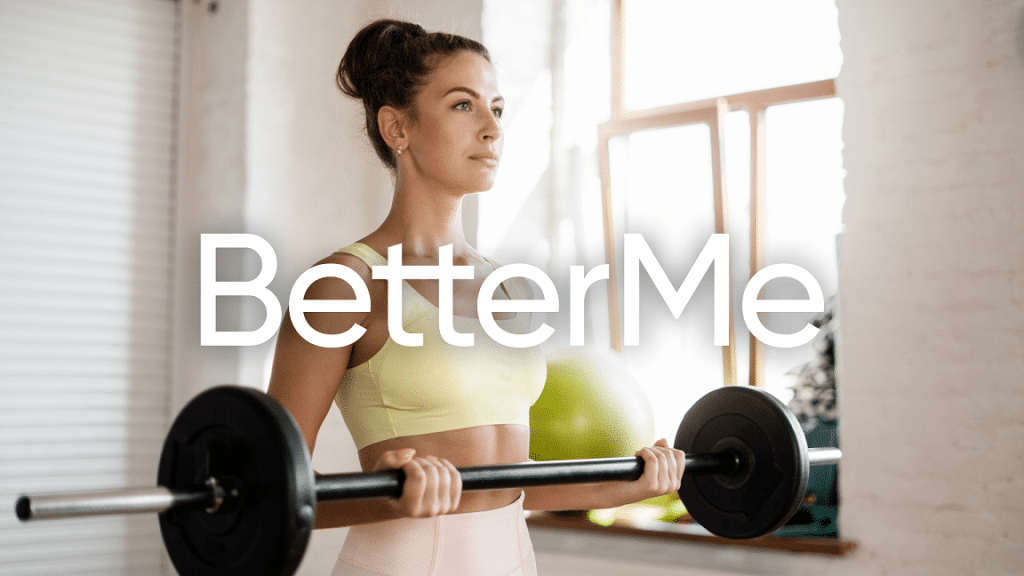
Jefferson Deadlift
This is a pretty great variation where you place the bar in between your legs. It is excellent for strength, power, hip durability, and core stability. It helps build your anti-rotational and asymmetrical strength. This lift involves a significant amount of the core musculature, but unfortunately, it is not very popular.
How to do a Jefferson deadlift:
- Straddle the bar with your feet at shoulder width but not wider. Ensure that the bar is in the middle of your legs, your spine remains in a neutral position.
- Grab the bar.
- Stand up with it. When pulling, make sure you do not collapse your knees towards the midline.
Common Mistakes To Avoid While Doing Deadlift
The best way to get the most out of the deadlift is to practice proper technique. This also helps you avoid injury. Here are 5 of the most common mistakes and how to fix each one of them:
Pre-Stretching
Before exercising, it is usually routine to stretch. With the deadlift, however, this is a mistake. Stretching major muscle groups before lifts can cause injury and is detrimental to the workout.
How to Fix It:
Before deadlifting, do dynamic warm-ups with bodyweight exercises such as Bird Dogs, squats, and Good Mornings.
A Rounded Or Arched Back
For deadlifts, a neutral spine is ideal. A hyperextended or rounded back places undue stress and extra pressure on the spine and can cause injury.
How to Fix It:
Keep your spine neutral (back flat) throughout the lift.
Extending Your Legs First
This becomes common as the weight increases. Lifters extend their legs with the barbell moving slightly or not at all. This leaves your back to perform the bulk of the lift and might cause it to round before you finish the lift.
How to Fix It:
Keep your core as tight as possible and raise the bar as you extend your hips and legs.
Allowing Your legs To Be Too Far Away From The Bar
Your legs should not be too far away from the bar either, as you will be leaning forward and are likely to round your back.
How to Fix It:
Stand one or two inches at most from the bar. It is okay if your shins come into contact with the bar.
Placing Your Feet Too Wide Apart
Foot placement is also crucial. When you place your feet too wide apart, you compromise your spine by rounding the shoulders. A wider stance also limits functionality. The only exception to this is when doing a sumo deadlift.
How To Fix It:
Ensure your feet are hip-width to shoulder-width apart.
Conclusion
Deadlifts are an excellent full-body movement workout when done correctly and carefully. They work your major muscles and help you build strength. Over time, deadlifting may help improve your core strength and stability.
Since there are tons of deadlift variations, a few probably suit you and help you achieve your body goals. Now that you are not a powerlifter, you can choose whatever variation works best for you. Be it the dumbbell deadlift variations or the straight-legged variations, go for what you feel challenges and suits you.
DISCLAIMER:
This article is intended for general informational purposes only and does not address individual circumstances. It is not a substitute for professional advice or help and should not be relied on to make decisions of any kind. Any action you take upon the information presented in this article is strictly at your own risk and responsibility!
SOURCES:
- Electromyographic activity in deadlift exercise and its variants. A systematic review (2020, ncbi.nlm.nih.gov)
- Exploring the Deadlift (2010, researchgate.net)
